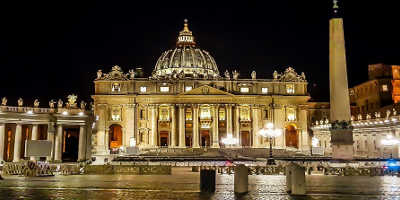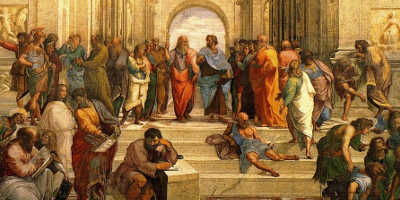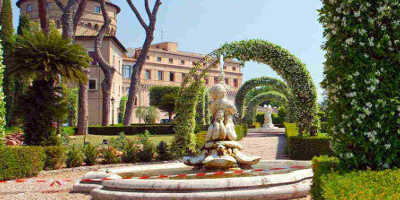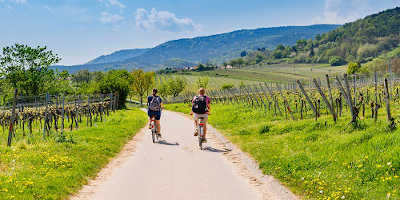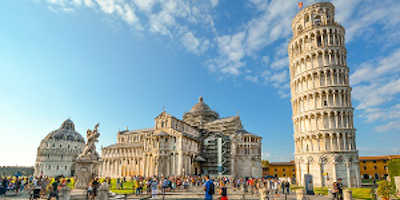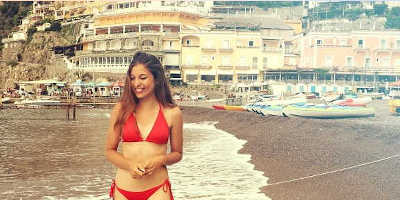Which are the best museums to visit?
Displaying over 20,000 works of art collected by several popes over the past few centuries, the Vatican Museums are a must-see with a variety of museums, galleries and rooms for you to browse
Vatican City is chock-full of incredible art and history, famous for the incredible Vatican Museums. It is not referring to one large building, but rather a series of 54 separate galleries within Vatican City, comprising of over 1400 rooms. The museums display works of art from the immense collection cumulated by the popes through the ages. But where to start? We have made it easy for you, by listing our top favourite museums that will make your holiday in Italy an unforgettable experience.
-
Raphael’s Rooms
Raphael’s rooms are four separate rooms that make up the suite of reception rooms in the Palace of Vatican. Each room is covered with unique frescos, painted and named after famous the painter Raphael. The Rooms are named Constantine, Heliodorus, Segnatura, and Fire in the Borgo-known as the Stanze of Raphael. Raphael began the project when he was 25 and spent the remainder of his life trying to complete it, almost finishing it before his death in 1520. Due to other projects taking up his time, Raphael gave multiple sections of the wall to other famous painters as well as his students, with only two rooms being completely decorated by him. Check out the incredible detail and beauty in these works as you wander from room to room.
-
The Pio-Clemente Museum
This museum is home to the famous Bramante Staircase. This modern staircase was inspired by the original ancient staircase, that was completed in 1505. All visitors must take this slopping staircase when leaving the building, as it is the marking point to the end of the museum. Designed by Giuseppe Momo in 1932, the staircase has similar features and styles as the original. Replicating the iconic double helix shape, which offers an incredible view from top to bottom. Whilst in the Museo Pio-Clementino, also make sure you check out the Octagonal Courtyard. This beautiful open-air space features several of the museum’s most famous sculptures, including Laocoon and his sons being killed by sea serpents, which dates back to 40 BC. And lastly, before leaving the Museo Pio-Clementino you might as well pop in to see The Hall of the Chariot, a gallery that is sometimes overlooked by visitors but is worth a look for its sea of art. Statues and sculptures are dotted around this grand room, portraying scenes from athletic games and competitions, making it a fun departure from the usual busts and art seen throughout the Vatican Museums.
-
Gallery of Maps
No tour to Vatican City is complete without a visit into the Gallery of Maps. Located on the west side of the Belvedere Courtyard, it is a long corridor that separates the Papal Palace from the Sistine Chapel. It is famous for its arched ceiling, decorated in beautifully bright and detailed artworks. The name comes from the 40 geographic frescoes depicting Italy and its provinces lining the walls painted by Perugian Ignazio Danti, a famous geographer of the 16th century. It is perhaps one of the most stunning rooms within the Vatican Museums. So, take your time as you walk through the corridor to analyse the detail of each map.
-
Gregorian Egyptian Museum
If you’re a history buff, look no further. Pope Gregory XVI founded the Gregorian Egyptian Museum in 1839. The collection consists of artworks and historical artefacts gathered throughout time. With multiple rooms depicting different non- Catholic places of worship. It houses a vast array of monuments and artefacts of ancient Egypt partly coming from Rome and from Villa Adriana, where they had been transferred mostly in the Imperial Age, and partly from private collections, purchased by 19th-century collectors. The Pope’s interest in Egypt was connected to the fundamental role attributed to this country by the Sacred Scripture in the History of Salvation. The Museum occupies 9 rooms divided by a large hemicycle that opens towards the terrace of the “Niche of the Fir Cone”, in which there are numerous sculptures and Egyptian artefacts.
-
The Papal Apartments
Includes the Raphael Rooms mentioned above, but The Papal Apartments also has more to offer, which is why it deserved its own subheading. Named as such because the popes once used this area as their private residence, the Papal Apartments today are where you’ll find a large collection of rooms featuring some of the most famous frescoes in the Vatican Museums. Other than the infamous Raphael Rooms, this area of the Museum also houses the Room of the Immaculate Conception. An unexpected favourite for many tourists who are overwhelmed by so much art and skill in one room. Painted by Francis Podesti, an Italian painter who was active in the 19th century, especially in the Romantic style. He was prolific in his large canvases on historical subjects as well demonstrated by the Hall of the Immaculate, which is probably his most famous work.
-
Cortile Della Pigna
Also known as the Pinecone Courtyard, the Cortile della Pigna gets its name from the gigantic bronze pinecone that sits at one end of the square. This is not the only unusual object found in the courtyard, however. It also features a gold sphere found as the opposite end, known as the Sfera con Sfera, or Sphere within a Sphere. Looking slightly out of place surrounded by much older counterparts, Sfera con Sfera is actually just one piece of a series by Arnaldo Pomodoro found in many locations across the world. Other versions of the sphere can be found at Trinity College, Dublin, the United Nations Headquarters and Mt. Sinai Hospital in New York. What are they for? What do they mean? I guess we may never know, but some have interpreted the spheres to represent the fragility and complexity of the world.


